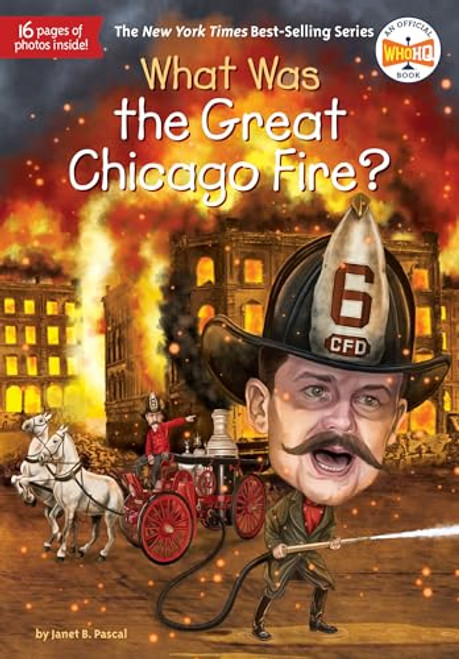*Includes pictures
*Includes eyewitness accounts of the disaster
*Includes a bibliography for further reading
The fire was barely fifteen minutes old. What followed was a series of fatal errors that set the fire free and doomed the city to a fiery death. Jim Murphy, The Great Fire
It had taken about 40 years for Chicago to grow from a small settlement of about 300 people into a thriving metropolis with a population of 300,000, but in just two days in 1871, much of that progress was burned to the ground. In arguably the most famous fire in American history, a blaze in the southwestern section of Chicago began to burn out of control on the night of October 8, 1871. Thanks to The Chicago Tribune, the fire has been apocryphally credited to a cow kicking over a lantern in Mrs. Catherine OLearys barn, and though that was not true, the rumor dogged Mrs. OLeary to the grave.
Of course, the cause of the fire didnt matter terribly much to the people who lost their lives or their property in the blaze. Thanks to dry conditions, wind, and wooden buildings, firefighters were never actually able to stop the fire, which burned itself out only after it spent nearly two whole days incinerating several square miles of Chicago. By the time rain mercifully helped to put the fire out, the Great Chicago Fire had already killed an estimated 300 people, destroyed an estimated 17,500 buildings, and left nearly 100,000 people (1/3 of the population) homeless.
Several other theories have developed as an explanation for the fire. Most of them center on people around Mrs. OLearys barn, but other have gone so far as to blame a meteor shower as the culprit that started fires across the Midwest that same night. As proof, they note that the countrys worst forest fire in history took place around the same time in the logging town of Peshtigo in northeastern Wisconsin, a fire that killed thousands.
Mrs. OLeary and her barn remain a part of lore, but it also speaks to Chicagos ability to rebuild that its almost impossible to envision a farm in downtown Chicago today. Chicago suffered a wide swath of destruction, but it had rebuilt itself within 20 years in order to host the Worlds Fair, evidence that it was back and bigger and better than ever. Along with that, Chicago has maintained its status as the regions biggest city and one of the most important in America.
The Great Chicago Fire chronicles one of the largest natural disasters of the 19th century in America. Along with pictures of important people, places, and events, you will learn about the Great Chicago Fire of 1871 like never before, in no time at all.










